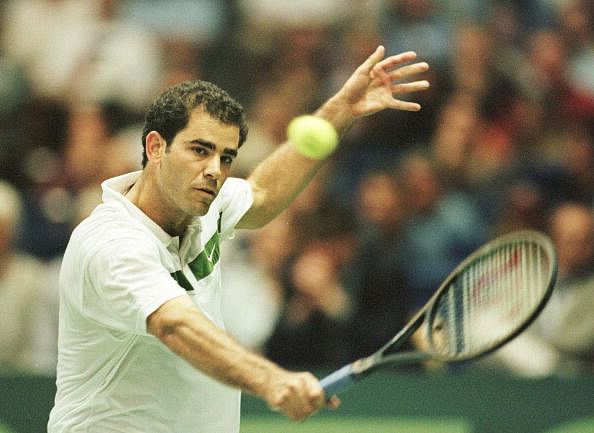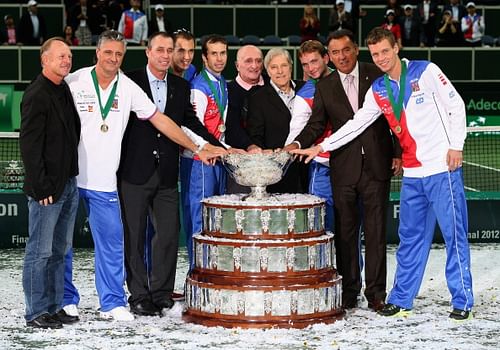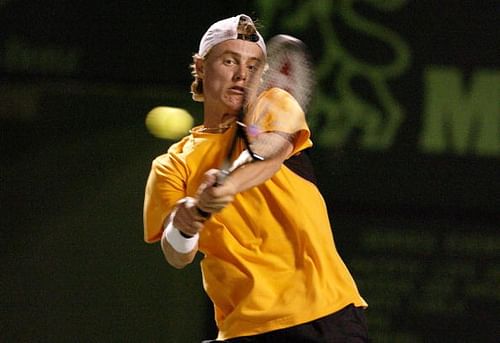
USA vs Australia - ultimate Davis Cup encounters

PRAGUE, CZECH REPUBLIC – NOVEMBER 18: Team captain Jaroslav Navratil, Radek Stepanek,Tomas Berdych, Lukas Rosol,Ivo Minar of Czech Republic and 1980 winning team Pavel Korda team captain,Jan Kodes,Pavel Slozil, Tomas Smid and Ivan Lendl pose by the winners trophy after a 3-2 victory against Spain during day three of the final Davis Cup match between Czech Republic and Spain at the 02 Arena on November 18, 2012 in Prague, Czech Republic.
The Czech Republic pipped the far more illustrious Spanish matadors to bag their second Davis Cup title last week. Led by world number six Tomas Berdych, with Radek Stepanek playing a crucial role by winning two ties including the deciding rubber, the Czech Republic took the tough route in emulating the 1980 Czechoslovakian side led by former world number one Ivan Lendl.
Seeded fifth in the World Group, they started off with a 4-1 mauling of Italy in Ostrava before putting home court advantage to good use to defeat 2010 champions and third seeds Serbia. Playing on indoor clay, the Czechs benefited from the absence of world number one Novak Djokovic, polishing off another 4-1 result.
Things got trickier then as they headed to Buenos Aires for the semifinal tie on outdoor clay against second-seeded Argentina, the runners-up in 2011, 2008, 2006 and 1981. With Juan Martin del Potro fit enough to take part in just one singles rubber, Berdych and co took advantage to wrap up the tie by the fourth rubber. And back on indoor hard courts, the Czech machine got over Stepanek’s and Berdych’s straight-sets losses to David Ferrer to win the remaining three rubbers and bag the overall title.
Are the Czech Republic the number one men’s tennis nation currently in the world? The sheer number of Spanish players in the top 50 – seven, including Ferrer, Nicolas Almagro, Fernando Verdasco, Marcel Granollers, Feliciano Lopez, Pablo Andujar and of course Rafael Nadal (Albert Ramos is #51) – indicates that perhaps it is they who are the real deserving contenders. They have indeed dominated the Davis Cup since the turn of the century, winning five times (2000, 2004, 2008, 2009, 2011) and also reaching the 2003 and 2012 finals.
However, the most number of Davis Cup titles has been won by the USA (32 in all), the last in 2007. Australia is second in the list with 28 titles including one in 2003. Even limiting this listing to the Open Era which started in 1969 and saw the game accepting professional players, the US leads the way with 12 victories, followed by Sweden (7), Australia (6) and Spain (5).

9 Apr 2000: Pete Sampras of the U.S. hits a backhand against Slava Dosedel of the Czech Republic during his straight sets win 6-4, 6-4, 6-6 (6-2) in the quarterfinal matches of the Davis Cup at the Great Western Forum in Los Angeles, California.
Statistically then, a meeting between the American sides of John McEnroe (victors in 1978, 1979, 1981 and 1982) and the Swedish sides of Mats Wilander and Stefan Edberg (titles in 1984, 1985 and 1987 – the last without Edberg) should be the pinnacle of team tennis. Even though the US in the 90s had an assortment of stars such as Pete Sampras, Andre Agassi, Jim Courier and Michael Chang, they did not always have the service of these players together for the Davis Cup. Also, while the likes of multiple-time Grand Slam winning Aussies Rod Laver (11 Slams), Roy Emerson (12), John Newcombe (7) and Ken Rosewall (8) all employed their trade in the 60’s and early 70’s, their heydays were before the Open Era as they won 15 out of 17 titles from 1950 to 1967.
If players across generations were to be mixed into one all-star four-man superweight team, again, the choice would be between these three nations and maybe on clay, the Spaniards. The Czech Republic could put out a strong side as would erstwhile Yugoslavia, but their might would vane in comparison to the big three.
The US team would probably be led by the enigmatic McEnroe, simply because of all that he has given to the US Davis Cup cause. Pistol Pete Sampras would be an obvious second choice with Agassi as the extra option. Courier or Jimmy Connors could come in as back up in case of rubbers on clay. The backup doubles player who will partner the leftie McEnroe would be the right-handed twin among the Bryans, Mike. A further backup in singles could be the legendary Arthur Ashe, who himself cornered Davis Cup glory in the 70s.
Australia, to my mind, is the obvious greatest threat. A team of Laver and Emerson, backed up by the greatest doubles team of all time in the Woodies would be really hard to beat. On grass, Lleyton Hewitt could get a look-in in case of an injury and Rosewall and Newcombe are other classy options to hold in reserve, with the latter a shout for one of the doubles slots too.

29 Mar 2002: Lleyton Hewitt of Australia returns a shot to Roger Federer of Switzerland during the Nasdaq-100 Open at The Tennis Center at Crandon Park in Miami, Florida.
The one nation that can spoil the party is Sweden with a possible line-up of Borg, Edberg, Wilander and Jonas Bjorkman. While it might sound ridiculous to suggest, Thomas Johansson could be a viable alternative for Borg on hard courts.
The current Spanish team with the addition of Carlos Moya and of course, the presence of Nadal would be Spain’s best bet. Nadal and Ferrer in the singles with Granollers or Lopez and Moya in the doubles. Yugoslavia would count on current top dog Djokovic with ace machine Goran Ivanisevic playing the second singles. Nenad Zimonjic could partner Janko Tipsarevic in the doubles. The Czechs could have Ivan Lendl and Berdych in the singles with Stepanek partnering Daniel Vacek in the doubles.
To add to this mix, throw in the French represented by Henri Leconte, Guy Forget, Yannick Noah and Jo Wilfried Tsonga and we have seven stong teams. The eighth and final side could be an All-Star Rest of the World outfit which would definitely have Federer as captain. The second singles spot if the tournament is on clay could go to Guillermo Vilas with Gustavo Kuerten as the back-up. The doubles combination would probably be Daniel Nestor and Leander Paes, although Mahesh Bhupathi and Max Mirnyi would have a shout due to their chemistry playing together on tour. On any other surface, the second singles spot after Federer would go to the German Boris Becker.
What would be the results if these teams were to be pitted together in a World Group style Davis Cup format? USA to knock out the eighth-seeded Czechs (5-0) while number two seeds Australia would steamroll France 5-0 on hard courts. Third seeds Sweden would destroy Yugoslavia on clay (4-1: Djokovic to beat Edberg/Wilander) while the All Stars would get the better of Spain (3-2). The semifinal between the All Stars and USA should go the Americans’ way on any surface other than clay while Australia should edge Sweden on the other half of the draw, both 3-2. The final, if again on clay, would go the Aussie way, while USA should win on grass. It could go either way on hard courts.